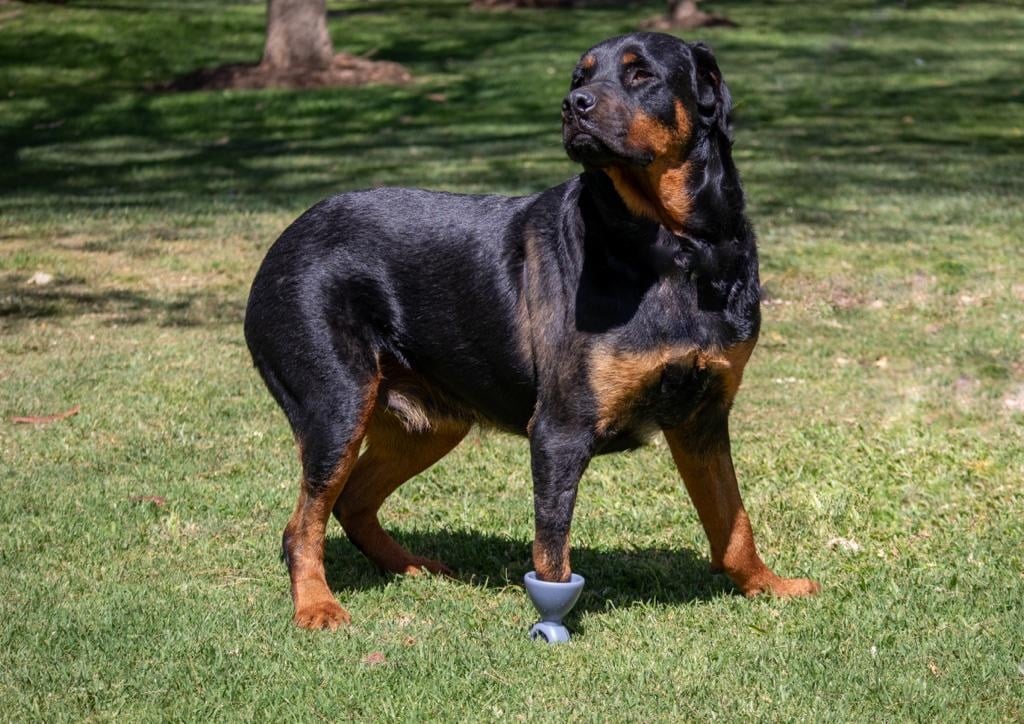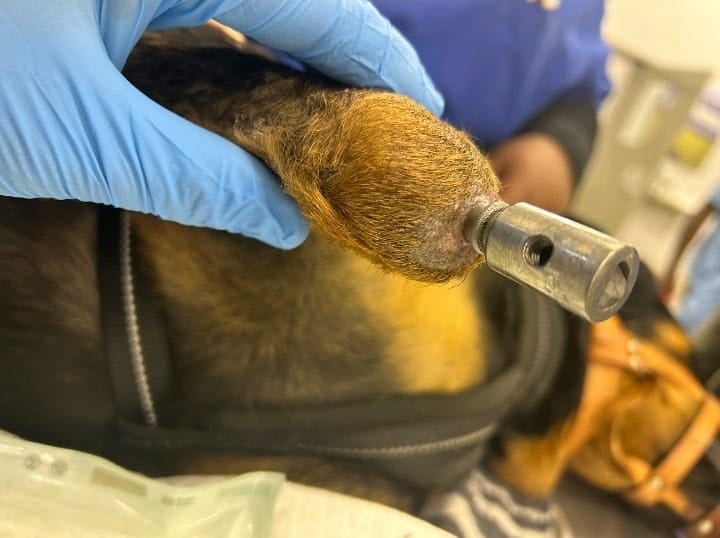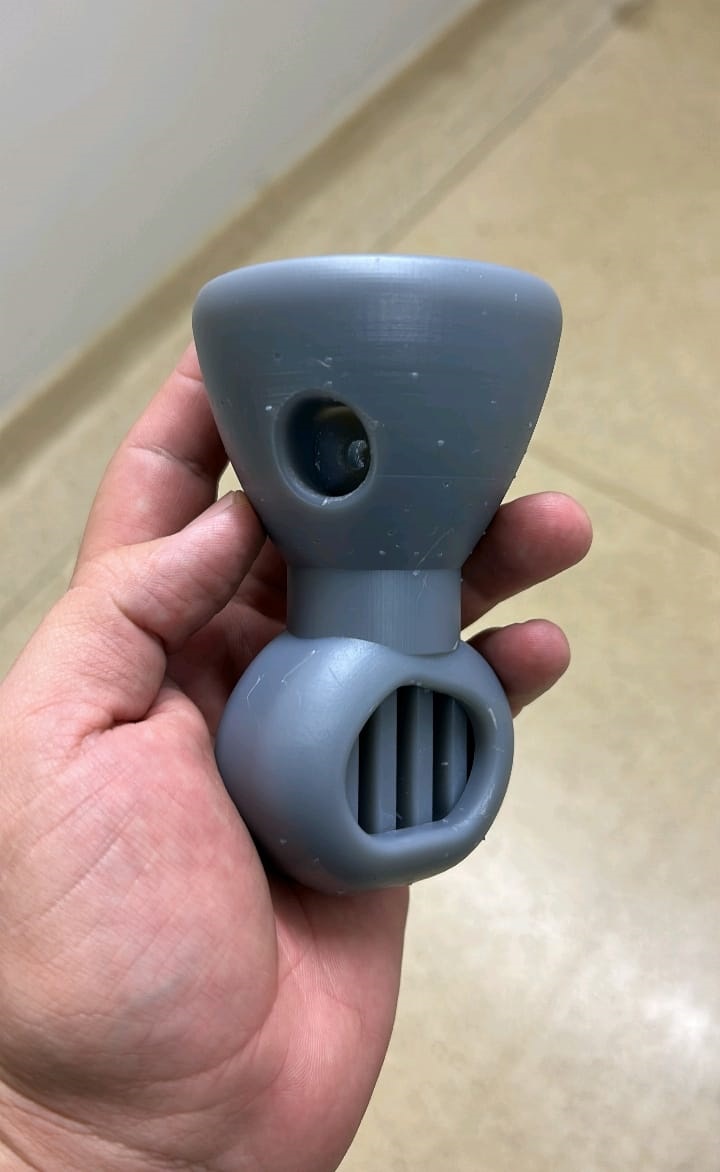
Covid with his prosthetic.
Supplied/University of Pretoria’s Onderstepoort Ve
- Covid, the rottweiler, is on his way to recovery after a successful surgery that allowed for the attachment of a new artificial foot.
- The rottweiler was injured by a corrugated iron sheet.
- Veterinarians at the University of Pretoria then performed South Africa’s first successful surgery to attach an artificial foot.
A young rottweiler named Covid has been given a new “leash” on life following innovative, ground-breaking prosthetic surgery to make him fully mobile again, after a corrugated iron sheet caused his injury.
Three-year-old Covid was taken to the University of Pretoria’s Onderstepoort Veterinary Academic Hospital with a “severe and debilitating” injury to his paw.
Lead surgeon Dr Klaas-Jan van de Wetering said the team knew amputation wasn’t the optimal solution, discussions were then held to find ideas.
“It was a nerve-wracking time for everyone because the conventional treatment for such an extensive wound would normally be amputation,” added Van de Wetering.
In Covid’s case, despite initial hopes of saving the limb, evidence of compromised blood supply also indicated amputation would be necessary.
After discussions with Covid’s owners of a possible new idea, Van de Wetering knew this would not be the optimal solution because of the challenges large breeds face with only one front limb.
“[We] looked for a solution that would ensure Covid maintained his quality of life.
“After intense discussion and research, a decision in favour of partial amputation was then made,” he said.
READ | Trouble came looking for them: Pup on the mend after chasing down criminals in Khayelitsha
This, in turn, made Covid an ideal candidate for intraosseous transcutaneous amputation prosthesis (ITAP) surgery.
According to Van de Wetering, the pioneering surgery involved creating and printing a prosthetic implant that integrated with the amputated limb, allowing for the attachment of an artificial foot.
“Simply put, an implant was placed in Covid’s bone and exited the skin where a prosthetic foot could be attached.
“But first, the wound was closed for healing. While the wound was recovering, the hard work began and a CT scan was conducted to aid in planning the implant,” he said.
The prosthesis was inserted at the beginning of July; the foot was attached six weeks later after the bone was integrated into the implant.
The university said the CT scans were sent to orthopaedics company Orthodesign, which were then used to create a custom-fitted implant.
Getting the perfect fit was imperative, so a 3D implant was printed in plastic for evaluation on a printed model of the limb.
“After minor adjustments, the final implant was 3D-printed in titanium.
“Once Covid’s wound had healed, the implant was inserted in a subsequent operation eight weeks after the initial surgery,” Van de Wetering added.
He said Covid demonstrated strength during his hospital stay.
“Post-operative infection was a concern, but fortunately, it did not occur.
“Continuous monitoring for infection is ongoing, and periodic replacements of the prosthetic foot are performed as needed,” added Van de Wetering.
The veterinary team has no plans to stop there.
“We have replaced Covid’s prosthesis twice in four months, but we are busy designing a more robust one that would hopefully last longer.”
Van de Wetering is positive about what the future holds for Covid.
“The fact that the surgery was a success makes it a possible surgical treatment for other patients [who] need amputations but would not cope with an amputation, for instance, a double amputee and large breed dogs that struggle with only three legs,” he said.
He added Covid’s successful ITAP surgery showcased the collaborative efforts of the surgical team, biomechanical engineer and support staff involved.
“The groundbreaking procedure not only saved Covid’s limb but also provided valuable insights into the feasibility and success of ITAP surgery in veterinary medicine.
“We look forward to using the experience and lessons learned with Covid and apply it in other clinical cases.”
Covid has since gone back to being his upbeat playful self, much to his owner’s relief.
“His relieved owners say he is walking and running with their other dogs at home and does not appear to be in any pain,” said Van de Wetering.








Recent Comments